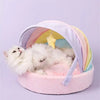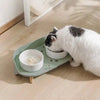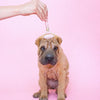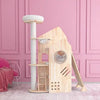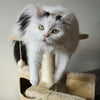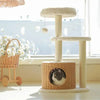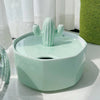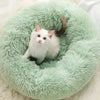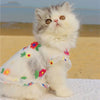Introduction to Feline Oral Anatomy
The oral anatomy of felines is a subject of interest for veterinarians, pet owners, and researchers alike. Understanding the structure of a cat's mouth, including the number of teeth, is crucial in maintaining their overall health. Cats are obligate carnivores, which means that their anatomy is uniquely adapted to consuming meat. Every part of their oral anatomy, including their teeth, plays a vital role in their ability to hunt and eat efficiently. It's also important for pet owners to recognize that dental health directly impacts a cat's quality of life.
How Many Teeth Do Cats Have?
Adult cats typically have 30 teeth . This includes four types of teeth: incisors, canines, premolars, and molars. These different types of teeth are specially adapted to enable the cat to perform particular tasks, such as slicing through flesh, gripping prey, and pulverizing food. Similar to other mammals, the dental formula in cats is designated as I3/3, C1/1, P3/2, M1/1. Each pair of numbers represents the number of each type of tooth in one half of the cat's mouth, with the top number representing the maxillary (upper) arc and the bottom representing the mandibular (lower) arc.
Deciduous Teeth in Kittens
Kittens, like human infants, are born edentulous, meaning they have no teeth. Their temporary or deciduous teeth start erupting around the third week of life. Kittens develop a total of 26 deciduous teeth. The purpose of this set of teeth is primarily to aid in the process of weaning onto solid food. Interestingly, these teeth are much sharper than those of the adult set, which is an adaptation to help kittens practice hunting behaviors. By the age of six months, these teeth are replaced by the adult set.
Function and Importance of Cat's Teeth
Each type of tooth serves a distinct purpose. The incisors, located at the forehead, are used for nibbling and grooming. The canines , or "fangs," are the prominent sharp teeth positioned to nab and hold prey. Premolars and molars, collectively known as cheek teeth, grind and shred the food into digestible bits. Cats do not grind their food in the same way as herbivores do; instead, their cheek teeth act to shear meat into smaller, more manageable pieces for swallowing.
Maintaining Cat Dental Health
Dental health is a paramount aspect of feline health care . Poor dental hygiene can lead to severe issues like periodontal disease, infection, and tooth loss, which subsequently impact a cat's general health. Regular dental check-ups with a veterinarian, combined with at-home care like teeth brushing, can help prevent these issues. Providing a diet that is appropriate for maintaining dental health, including foods specifically designed to reduce tartar, can also be beneficial.
Conclusion: The Significance of Understanding Cat Dentition
Understanding the dental anatomy of cats, including the number and function of their teeth, is imperative for ensuring their health and well-being. By being proactive in maintaining dental hygiene and understanding the special requirements of their teeth, owners can significantly improve the quality of life for their feline companions. Proper care and regular veterinary visits can ensure that every cat enjoys the full functionality and health of their set of 30 incisors, canines, molars, and premolars .



